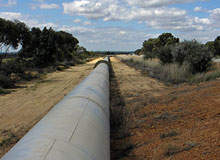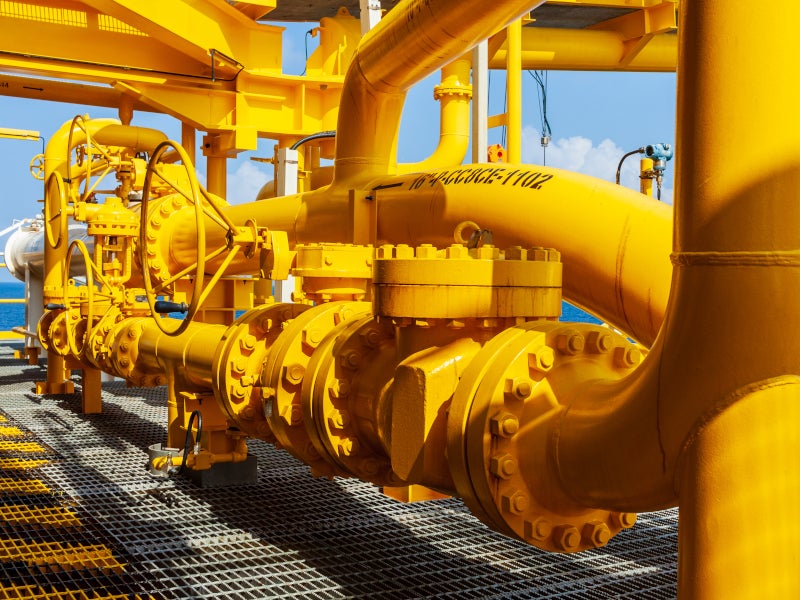
Pipeline systems are the backbone of the critical infrastructure of any country. Accidents related to such systems can have severe consequences to the environment and people living in the area, and can involve years of legal proceedings against operating companies and those responsible.
But with the ever ageing infrastructure, underwater corrosion and other threats causing leaks or ruptures, the effective monitoring and maintenance has become ever more vital to the safety and security of pipelines.
The risk-based predictive maintenance (RBPrM) of pipelines, yet to be fully accepted by the industry as an efficient means of pipeline maintenance and protection, is one of the subjects to be debated at Arena International’s Oil & Gas Pipeline Integrity Management Summit, taking place on 3 and 4 October 2011 in Aberdeen, UK.
Talking about the latest innovative developments in practical predictive maintenance will be Science and Engineering Center ‘Reliability and Safety of Large Systems’ Ural branch Russian Academy of Sciences director Sviatoslav Timashev.
Here, he shares the methodologies of RBPrM, how they can be implemented with modern pipeline companies, and what they could mean for an industry prone to accidents caused by an ageing infrastructure and mishandling of pipelines.
See Also:
Elisabeth Fischer: How does RBPrM differ from more traditional methods of maintaining pipelines?
Sviatoslav Timashev: It would be hard to define it in a short interview, but figuratively speaking, it’s like using a flashlight versus a candle in a dark cave, or a strong projector versus a flashlight when driving through thick fog. Predictive maintenance permits looking into the future condition of the pipeline with much greater clarity and accuracy than conventional methods allow, and produces a better pipeline integrity management (PIM) plan with close to optimal expenses and minimal labour.
How well do you really know your competitors?
Access the most comprehensive Company Profiles on the market, powered by GlobalData. Save hours of research. Gain competitive edge.

Thank you!
Your download email will arrive shortly
Not ready to buy yet? Download a free sample
We are confident about the unique quality of our Company Profiles. However, we want you to make the most beneficial decision for your business, so we offer a free sample that you can download by submitting the below form
By GlobalDataEF: How has the industry embraced PrM systems?
ST: The industry is dealing with highly critical nationally important infrastructure systems. It has to be reasonably conservative when implementing innovations because they may bring unforeseen new threats. The industry also wants to be sure that new results will not compromise the overall safety of the pipeline and not jeopardise the bottom line of their budget.
These constraints lead to a ‘one-step-at-a-time’ implementation of any innovation in the pipeline industry. Bearing this in mind we can see some encouraging elements of risk-based PrM making its way into the pipeline industry.
EF: What are the methodologies of RBPrM of pipelines?
ST: In brief, the methodology of RBPrM of pipelines is based on using the risk-based approach when making pipeline maintenance decisions. These decisions always involve economic considerations.
Therefore in order to use risk analysis as a tool, one has to be able to assess it with reasonable accuracy. The probability of failure (POF) is a result of solving the problems of pipeline strength, residual life and reliability.
These parameters are assessed using practically all components of structural mechanics and structural reliability. The consequences of pipeline failure involve loss of property, revenue, environmental damage, human casualties and image loss. To assess these components, different tools from many branches of science and engineering disciplines have to be used.
Without exaggeration, RBPM is a multi and interdisciplinary problem. It cannot be solved in a silo fashion. It also can be considered as a fusion centre where all the intermediary results obtained using different tools are fused to produce a quantitative risk assessment.
During this process some cross-utilisation and cross-fertilisation is needed. Moreover, it should be noted that as a system pipeline, especially off-shore or in permafrost, it could be as complex as a rocket, and RBPM science needed for such facilities as sophisticated as rocket science.
EF: How do you communicate risk?
ST: Risk communication is a crucial part of the RBPrM. When communicating the PrM findings to the senior leadership of the pipeline company the format of the PrM should provide easy understanding and convey risk issues to the CEO and CFO.
Speaking of leadership, some companies are contemplating creating a position of the chief risk officer (CRO). The leadership loves simple qualitative answers to maintenance issues.
With advancement of the pipeline technology it inevitably gets more and more sophisticated. In order to continue the ‘simple’ format of the decision making process the data gathering and validating and risk assessing process should be automated and presented in a simple visualised form. I dare to forecast that in a few years RBPM will be a mature well-established pipeline maintenance technology.
EF: What are the latest methods for quantifying corrosion rates for main and production pipelines?
ST: The evolution of these methods is from the simple, linear and deterministic to non-linear stochastic. The methods use the raw results procured using discrete or continuous monitoring of the corroding pipeline parameters followed by rigorous statistical analysis of the experimental results.
The main problem here lies in the fact that all measurements and calculations made for assessing corrosion rates containing inherent measurement errors. It is impossible to fully eliminate them.
But it is possible to minimise them, using direct measurements and mathematical methods of data analysis, which provide the highest accuracy and precision of the parameters being assessed.
EF: What technology do you use to forecast the warning, alarm and failure states of a pipeline?
ST: When first introduced, the predictive maintenance did not stand up to the expectations, because it didn’t have the means of defining the optimal moments of time which should ‘trigger’ the specific maintenance actions. Then a correct way to define these levels by solving a corresponding optimisation problem, which involves the costs of an incident versus the costs of maintenance and repair, was introduced.
For the case of pipeline systems there is a better practical method of establishing these triggering levels.
The institutional knowledge accumulated by pipeline operators worldwide permits using some critical values of pipeline physical parameters which are ‘red flags’ for pipeline operators.
For instance, the warning level could be a certain fraction of pipe wall thickness. The alarm level would be the moment of time when the defect depth is equal to 0.8 of pipe web thickness, when the existing codes enforce immediate repair.
The failure level is when the pipeline actually leaks or ruptures. To play it safe, pipeline companies could introduce additional layers of safety, keeping in mind that each additional layer will increase maintenance costs.
EF: How can companies minimise threats to pipelines?
ST: When the pipeline owner or operator know what might be ahead and when an undesirable event may happen, they can prevent it happening by taking specific measures well in advance. This mitigates the threat and brings the possibility of a disaster to a very low figure, which could be accepted in today’s world of risk.
When reliable predictions of the future states of an operating pipeline are available, it is possible to create a logistics plan which accounts for all the dangerous future moments of pipeline operation and prevents them from happening. The RBPrM wipes out a tremendous amount of uncertainty and permits using quantitative tools to find the future times which would trigger diagnostics, maintenance or operational changes.
This does not mean the pipeline with this will be absolutely safe but the rate of failure of such pipelines will be several orders of magnitude less than for a pipeline which is maintained using conventional concepts.
EF: What are the preconditions of successfully implementing PrM systems?
ST: The main precondition is simple: the top managers of the pipeline company should be genuinely interested in using this innovative approach, which permits simultaneously improving safety of the pipeline, its efficacy and the company’s bottom line. They should also take into account that by using the latest innovations in their field they receive ‘inoculation’ against possible litigation processes, during which they may be asked to prove they used all available means to prevent what happened and caused the litigation.
The other precondition stems from the first. The company has to train its maintenance personnel, and have results of inspections or direct assessments in the form and format which allows producing accurate assessments of pipeline defects’ parameters. I would like to stress here that currently there are all needed components for creating and implementing RBPrM. Those companies, which embrace this technology first, will benefit most.
EF: Based on the results of implementation of the methodology on a real-life pipeline, what can be further improved in the future?
ST: The first results of implementation of the RBPrM are promising. They also give new insights into the existing knowledge gaps and provide understanding in which directions the technology should move. All components of the RBPrM could be improved and tested in field. New hardware and software should be developed which permit improving all metrics of the RBPrM technology.
In conclusion I would like to stress that we have no choice but live in complexity and be surrounded by threats. In this context, it is necessary to unite forces to prevent and mitigate pipeline failures.
As the saying goes, it takes two to dance a tango. Hence, there should be a rapport established between the pipeline operator or owner, diagnostics provider and academia to enhance and expedite progress in the pipeline industry.
The Arena International Oil & Gas Pipeline Integrity Management Summit will take place in Aberdeen, UK, on 3 and 4 October 2011.




